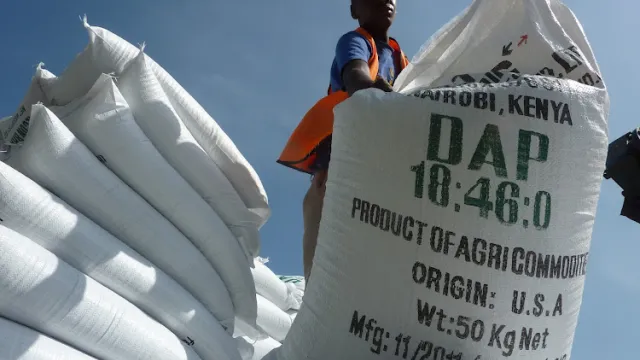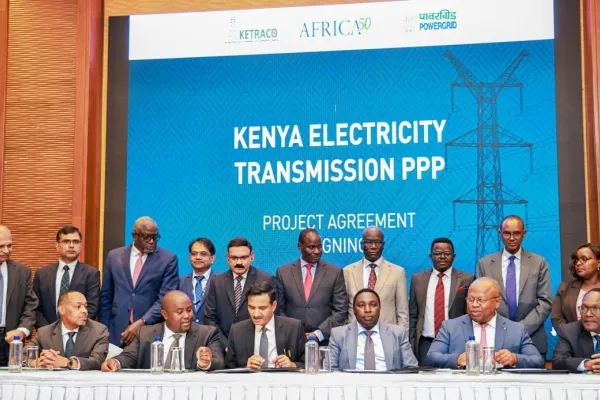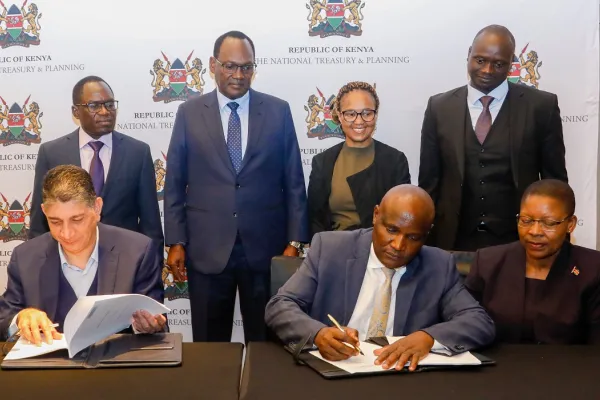Fertilizer subsidy sets Kenya on track for 44 million maize bags

Fertilizer subsidy sets Kenya on track for 44 million maize bags
Farmers across Kenya are expected to harvest roughly 44 million bags of maize from the current long rains season. This will be a 37.5 percent increase from the 32 million bags harvested during the same season in 2022.
The long rains season usually accounts for 80 percent of the produce and while the year has experienced favourable weather, the government is attributing it to the timely distribution of subsidised fertilisers.
“Our target is to produce 61 million bags annually between this season and 2027,” said President William Ruto while announcing the second phase of subsidy fertiliser distribution in readiness for the short rains.
In the long rain season, most farmers used one bag of fertiliser per acre. Data shows that if you double the fertiliser per acre, you’ll get more yield of between 12 and 25 bags of maize, noted the President while urging growers to increase fertiliser orders for their farms.
The national and county governments will provide the delivery of subsidy fertilizer retailing at Kes2,500 to millions of farmers through the opening of over 50 distribution centers at the grassroots.
This will be the second phase of distributing the key farm input across Kenya in an effort to address food production in President William Ruto’s administration.
A total of 100,000 metric tonnes, or two million 50kg bags of fertiliser at a subsidized cost of Kes2,500 down from Kes3,500 will be distributed for the upcoming short rains.
Read also: Role of data in implementing the Abuja declaration on fertilizer for the African green revolution
Subsidised fertilizer e-vouchers
Last year, the government made available 300,000MT or six million 50Kg bags of subsidised fertiliser at Kes3,500 each from Kes7,000. Since the onset of the long rain season, President Ruto said over 3.5 million bags were delivered to farmers across Kenya. In the process, the government managed to register over five million farmers, and issued 3,628,512 e-vouchers while also establishing last-mile fertiliser distribution centres.
“We collaborated with Safaricom to develop and deploy the fertiliser e-voucher system to administer the fertiliser subsidy transparently, accurately and efficiently,” Dr Ruto explained.
“For the first time in our country’s history, we are providing farmers with fertilizer whose formulation is customized to feed crops with their specific requirement of elements and address local soil nutrient composition. It is also the first time that fertilizer has been directly delivered to farmers on the basis of land acreage and crop production capacity,’’ explained Dr Ruto.
To enhance investments in the sector, Dr Ruto said his administration is increasing the budget for the Agriculture Finance Corporation (AFC) from Kes2 billion to Kes10 billion, to facilitate affordable credit available to farmers. The credit will be provided at single-digit rates to further reduce our cost of production and enhance the productivity.
In 2017, Kenya produced 39.6 million bags of maize. In 2018, production rose to 44.6 million bags but later slumped to 39.7 million bags in 2019. In 2021, 40.2 million bags were produced and 43 million bags last year.



